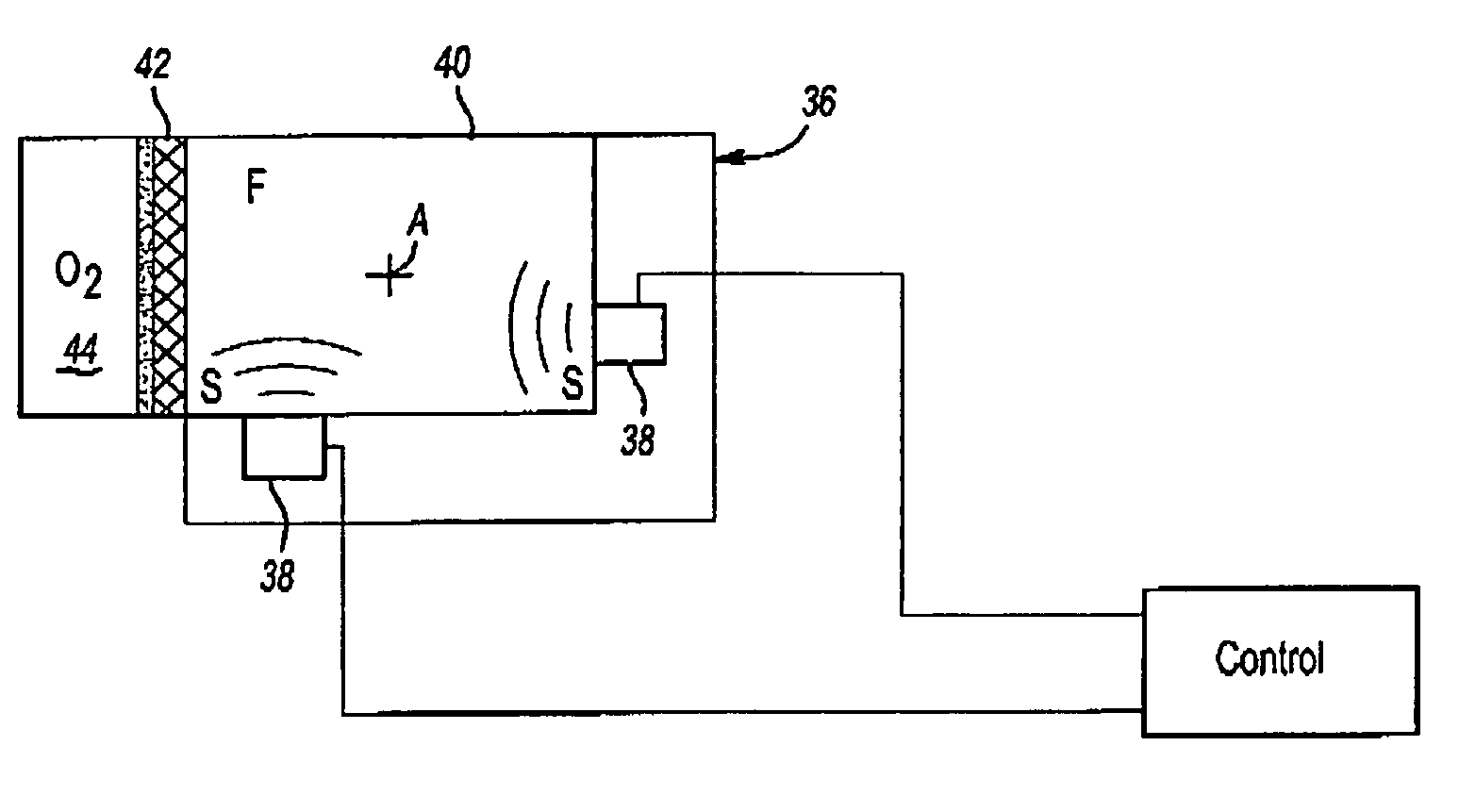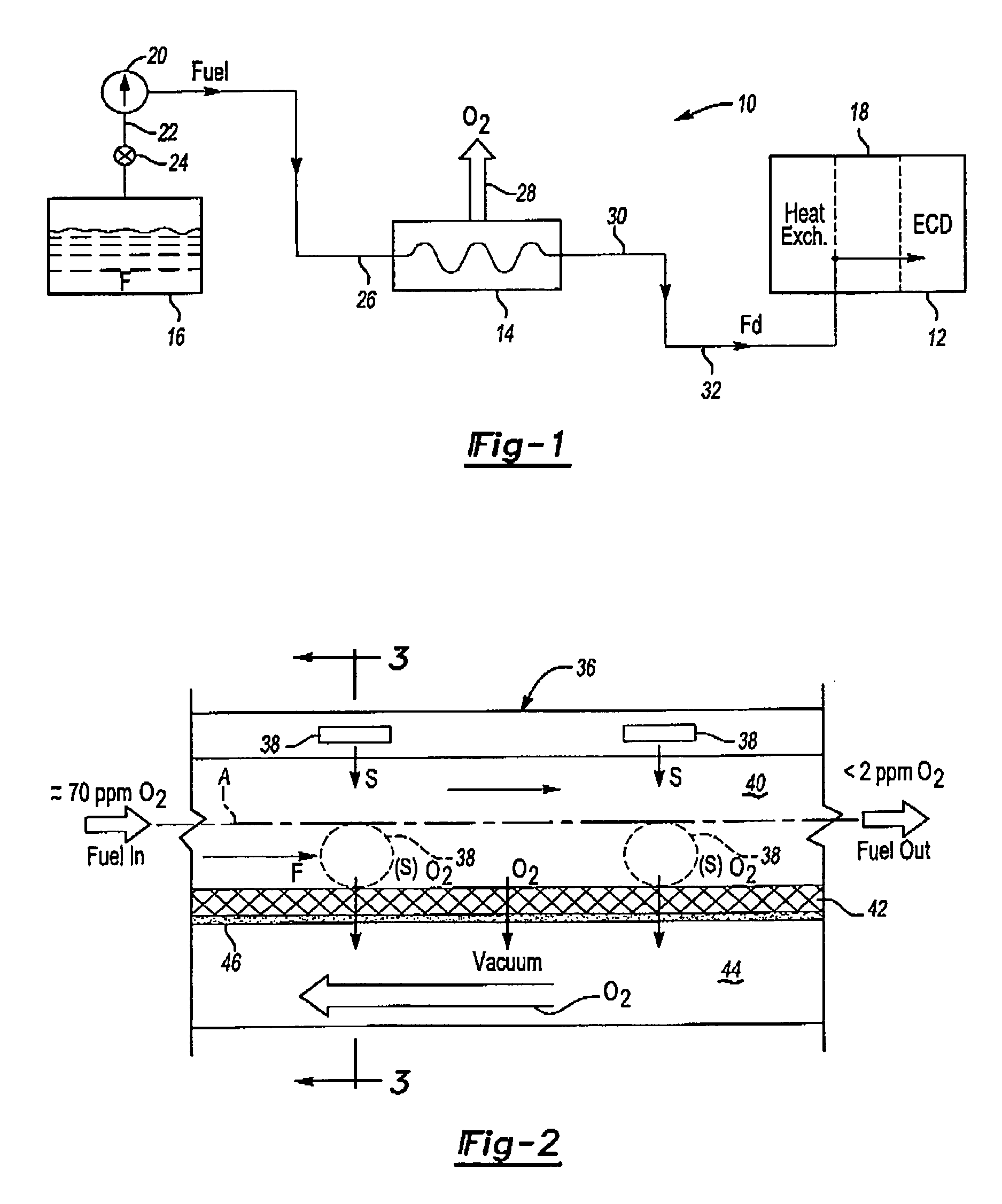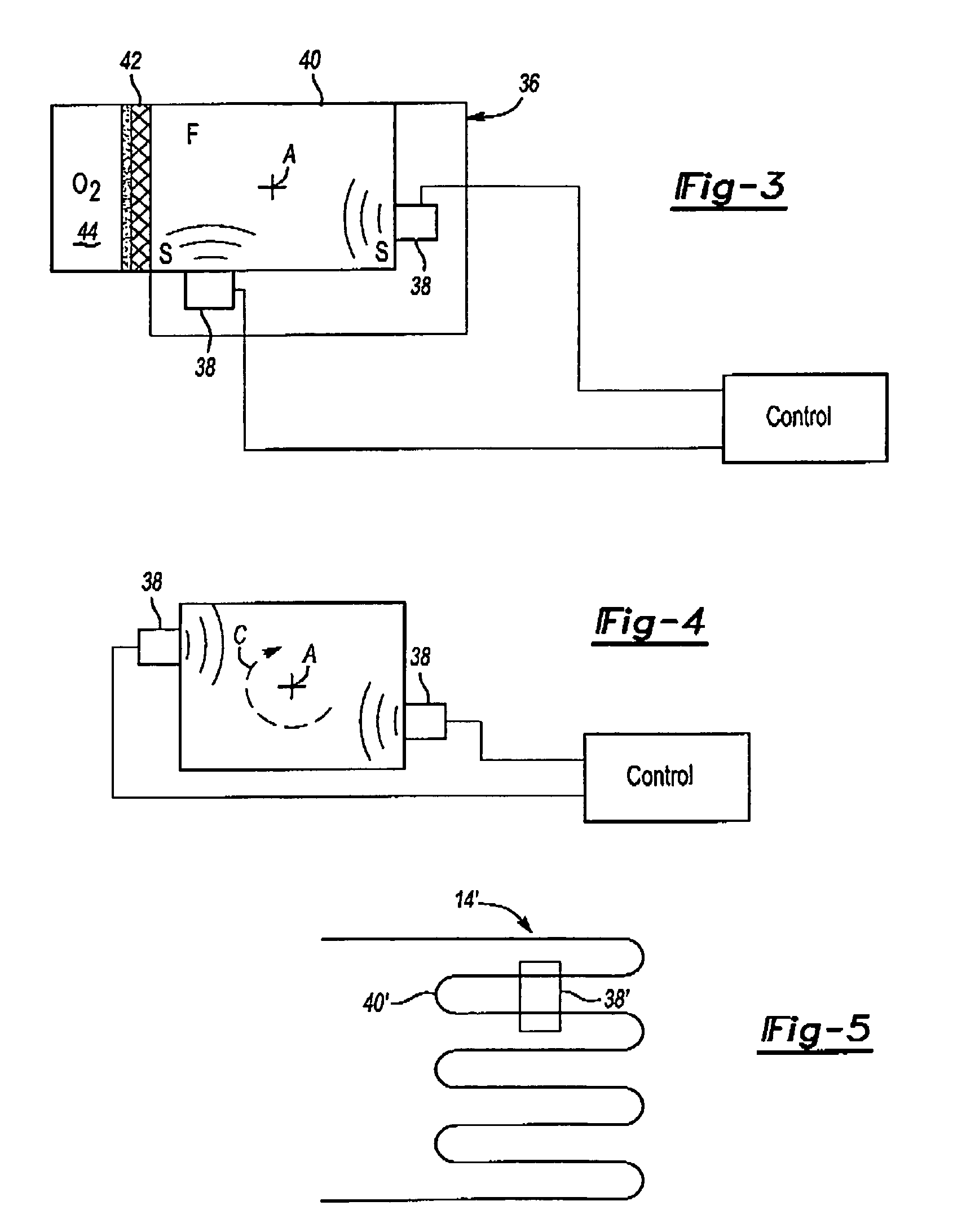Acoustic fuel deoxygenation system
a fuel deoxygenation and acoustic technology, applied in liquid degasification, combustible gas purification/modification, separation processes, etc., can solve the problems of inhibiting combustion, affecting the fuel line, and dissolved oxygen in jet fuels, so as to improve the fuel deoxygenation rate, reduce coking, and improve the effect of flow mixing
- Summary
- Abstract
- Description
- Claims
- Application Information
AI Technical Summary
Benefits of technology
Problems solved by technology
Method used
Image
Examples
Embodiment Construction
[0015]FIG. 1 illustrates a general perspective view of a fuel system 10 for an energy conversion device (ECD) 12. A deoxygenator system 14 receives liquid fuel F from a reservoir 16. The fuel F is typically a hydrocarbon such as jet fuel. The ECD 12 may exist in a variety of forms in which the fuel, at some point prior to eventual use for processing, for combustion or for some form of energy release, acquires sufficient heat which may support autoxidation reactions and coking if dissolved oxygen is present to any significant extent in the fuel.
[0016]One form of the ECD 12 is a gas turbine engine in which fuel is pre-heated to increase heat capacity and is used as a liquid coolant for one or several systems in an aircraft. In any event, fuel becomes heated as it is delivered to fuel injectors immediately prior to combustion.
[0017]A heat exchange section 18 represents a system through which the fuel passes in a heat exchange relationship. It should be understood that the heat exchange...
PUM
| Property | Measurement | Unit |
|---|---|---|
| permeable | aaaaa | aaaaa |
| oxygen-permeable | aaaaa | aaaaa |
| concentration | aaaaa | aaaaa |
Abstract
Description
Claims
Application Information
 Login to View More
Login to View More - R&D
- Intellectual Property
- Life Sciences
- Materials
- Tech Scout
- Unparalleled Data Quality
- Higher Quality Content
- 60% Fewer Hallucinations
Browse by: Latest US Patents, China's latest patents, Technical Efficacy Thesaurus, Application Domain, Technology Topic, Popular Technical Reports.
© 2025 PatSnap. All rights reserved.Legal|Privacy policy|Modern Slavery Act Transparency Statement|Sitemap|About US| Contact US: help@patsnap.com



